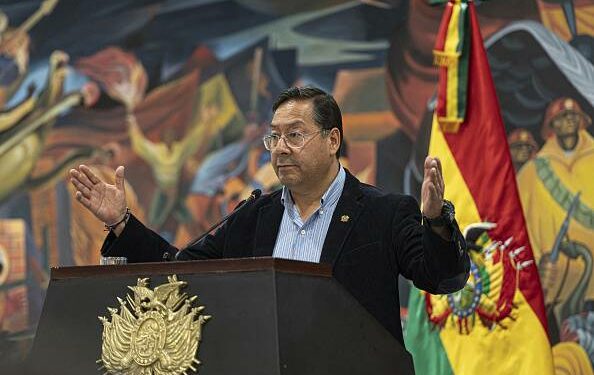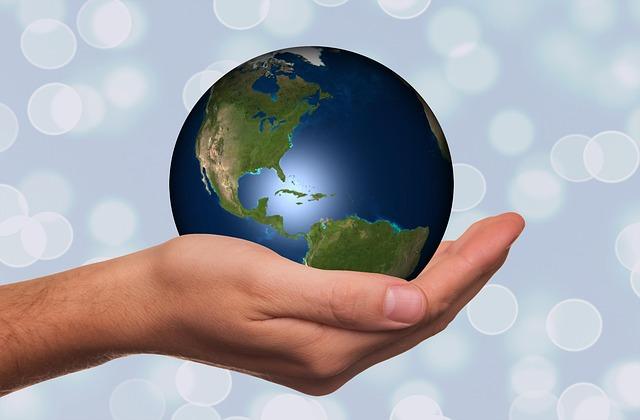The Movement for Socialism (MAS), BoliviaŌĆÖs most significant political force in the past 20 years, has been an extraordinary experiment in left-wing politics.┬Ā
Since its formation, it has transformed Bolivian society and inspired movements worldwide. However, internal divisions now threaten not only the partyŌĆÖs coherence but also its historical legacy.┬Ā
For the international left, the MAS has been a symbol of hope; its potential fracture is both concerning and instructive.
The MAS was born out of the struggles of BoliviaŌĆÖs Indigenous and working-class people, particularly in response to the neoliberal policies of the 1980s and 1990s.
These policies, imposed by successive governments under the dictates of international financial institutions, led to privatisation, resource exploitation and a surge in inequality. The resulting economic devastation disproportionately affected Indigenous campesinos, miners and coca growers.
Evo Morales, leader of a coca farmers union, emerged as a key figure in these struggles. Along with other leaders of Indigenous and grassroots movements, Morales helped consolidate a coalition of unions, peasant federations and leftist intellectuals.┬Ā
In 1997, this coalition coalesced into a political party: the MAS-IPSP (Movimiento al Socialismo ŌĆō Political Instrument for the Sovereignty of the Peoples).┬Ā
The party sought to challenge the entrenched white elite, reject neoliberalism and reimagine Bolivia as a plurinational state, recognising its Indigenous majority.
├ülvaro Garc├Ła Linera, BoliviaŌĆÖs vice-president under Morales and a key intellectual force in the MAS, described the partyŌĆÖs approach as blending traditional Indigenous worldviews with Marxist economic analysis. This synthesis became a cornerstone of the MASŌĆÖs philosophy, challenging centuries of exclusion and exploitation.┬Ā
Reflecting on this, Garc├Ła Linera argued that ŌĆ£Marxism can deepen the contribution of Indianismo, and Indianismo can sharpen some of the positions advanced by Marxism.ŌĆØ┬Ā
This synthesis of Marxism and Indigenous views and practices was hugely successful and enabled the MASŌĆÖs ability to integrate the struggles of BoliviaŌĆÖs Indigenous majority with a broader critique of capitalism, forming the foundation of its transformative project.
The MAS rapidly gained traction, particularly among rural and Indigenous communities, as well as the urban poor. Its promise to reclaim BoliviaŌĆÖs natural resources and prioritise the needs of the poor resonated in a country where Indigenous people had long been marginalised.┬Ā
MoralesŌĆÖs victory in the 2005 presidential election marked a historic turning point: BoliviaŌĆÖs first Indigenous president came to power with a mandate for sweeping change.
After assuming office, the MAS pursued a bold agenda that resonated with leftist movements worldwide. Central to its platform was the nationalisation of BoliviaŌĆÖs natural gas industry, a move that restored billions of dollars in revenue to the state. This funding underpinned ambitious social programmes that lifted millions out of poverty, expanded access to education and improved healthcare.
The MAS presided over a period of extraordinary economic growth and social transformation.┬Ā
From 2005 to 2019, BoliviaŌĆÖs GDP grew at an average rate of over 4.5% a year, one of the highest in the region. Extreme poverty dropped from 38% in 2005 to 15% in 2019, marking a significant improvement in living standards.
One of the MASŌĆÖs most ambitious achievements was its land reform programme, which redistributed about 23ŌĆēŌĆēmillion hectares of land to Indigenous communities and small-scale farmers. This was not merely an economic reform but, as academic and activist Raquel Aguilar notes, ŌĆ£a symbolic act of justice for centuries of dispossessionŌĆØ.
MoralesŌĆÖs government also introduced a new Constitution in 2009, declaring Bolivia a plurinational state, enshrining Indigenous rights and recognising communal forms of land ownership.
But the MAS faced criticism as well. Environmentalists and Indigenous activists in the party expressed concern over the expansion of mining and gas extraction in ecologically sensitive areas. Critics argued that the governmentŌĆÖs development model, while redistributive, relied heavily on resource extraction and perpetuated a dependence on volatile global commodity markets.
Internationally, the MAS became a leading force in the Latin American ŌĆ£Pink TideŌĆØ (1998ŌĆō2015), a wave of leftist governments that challenged US hegemony and neoliberal orthodoxy. This era saw the election of leaders such as Hugo Ch├Īvez in Venezuela (1998), Lula da Silva in Brazil (2002), N├®stor Kirchner in Argentina (2003) and Rafael Correa in Ecuador (2007).┬Ā
All of these leaders faced significant, often Western-backed, opposition. Ch├Īvez survived a coup in 2002, and LulaŌĆÖs successor, Dilma Rousseff, was removed from office through a judicial coup in 2016, after which Lula was imprisoned on false charges.
The MAS faced significant challenges from US-backed opposition groups dominated by right-wing elements in the old white elite. But internal tensions also emerged over MoralesŌĆÖs leadership. After 14 years in power, his decision to run for a controversial fourth term in 2019, despite losing a referendum on the matter, alienated parts of the Bolivian left.
While the votes were being counted in the 2019 election, the Organisation of American States (OAS), a largely US-funded organisation, claimed that there was evidence of fraud. The Western media took the claim as fact, opposition groups took to the streets, and the military moved against Morales, resulting in a coup.┬Ā
Later, the highly respected Center for Economic and Policy Research analysed the OASŌĆÖs statements and found that the organisation ŌĆ£provided absolutely no evidence ŌĆö no statistics, numbers, or facts of any kind ŌĆö to supportŌĆØ its claims of electoral fraud.
A hard right-wing, white-dominated government seized power under Jeanine ├ü├▒ez, who declared herself interim president without the required constitutional quorum. The Western-backed ├ü├▒ez administration quickly aligned itself with conservative white elites, it marginalised Indigenous voices, and it sought to dismantle the transformative policies of the previous government.┬Ā
It oversaw violent repression of MAS supporters and Indigenous protestors, most notably in the Sacaba and Senkata massacres, where state forces killed dozens of demonstrators. The government also pursued a campaign of legal persecution against MAS leaders and activists.
Despite the setbacks of 2019, the MAS made a dramatic comeback in 2020. Luis Arce, MoralesŌĆÖs former finance minister, won the presidency with 55% of the vote. The victory demonstrated the enduring appeal of the MASŌĆÖs policies and its ability to mobilise broad support, even in the face of internal disputes and right-wing assaults.
But MoralesŌĆÖs return to Bolivia after the election set the stage for tensions between him and Arce. This division has intensified in recent months, with Morales publicly criticising ArceŌĆÖs government and accusing it of sidelining his allies.┬Ā
The rift has been exacerbated by disagreements over candidate selection for upcoming elections and differing visions for the MASŌĆÖs future. MoralesŌĆÖ faction has accused Arce of betraying the partyŌĆÖs revolutionary ethos, while ArceŌĆÖs supporters argue that MoralesŌĆÖs influence has become a liability.
The MASŌĆÖs internal conflict is not just a Bolivian matter; it has significant implications for the international left. For decades, the MAS has demonstrated that it is possible to challenge neoliberal orthodoxy, uplift poor and racially marginalised communities, and redefine nationhood.
The current schism threatens to undermine this legacy. A divided MAS is weakening BoliviaŌĆÖs progressive project and could pave the way for the return of right-wing forces that have long sought to dismantle its gains.
A key element in this crisis for the MAS is the paradox that while MoralesŌĆÖs charismatic leadership brought the MAS to power and enabled huge social gains, his reluctance to step back has fuelled divisions and threatens the whole left project.
Charisma has often been central to the most significant achievements of the left and is often a huge asset to the left. One thinks, for instance, of Lula in Brazil. It is a mistake to dismiss the significance of charisma.
But the left cannot rely on charisma and must grapple with how to build political institutions that are resilient enough to survive beyond the tenure of any single leader and, where necessary, to hold charismatic leaders to democratic account.
For the MAS, the path forward requires difficult but necessary reflection. The party must find a way to reconcile its internal factions, re-establish trust and reaffirm its commitment to the transformative goals that brought it to power. This will require humility from both Morales and Arce, as well as a willingness to prioritise the broader movement over personal or factional interests.┬Ā
The stakes are high. Bolivia remains a deeply unequal society, and the MASŌĆÖs vision of a more inclusive and equitable nation is far from complete.
The MAS has shown what is possible. Now it must show that it can endure.
Dr Imraan Buccus is a political analyst.
Source link : http://www.bing.com/news/apiclick.aspx?ref=FexRss&aid=&tid=67498e636aee4aff851f3801ea885e3f&url=https%3A%2F%2Fmg.co.za%2Fthought-leader%2F2024-11-29-divisions-threaten-bolivias-mas-and-its-legacy-of-left-wing-transformation%2F&c=10177840271727625759&mkt=en-us
Author :
Publish date : 2024-11-28 13:00:00
Copyright for syndicated content belongs to the linked Source.












